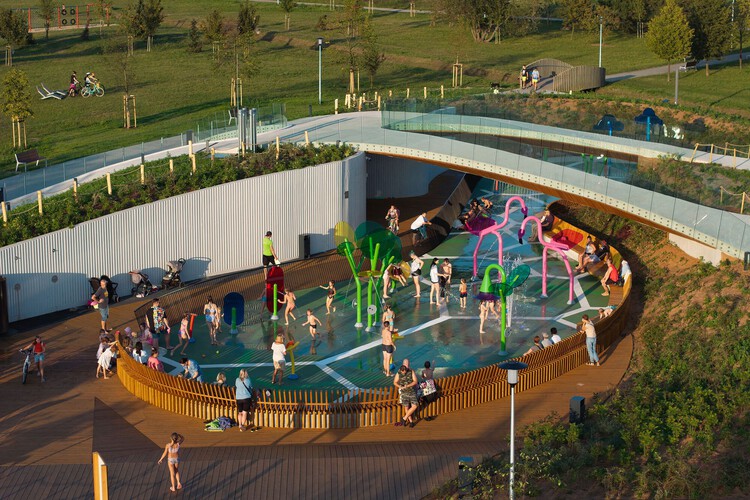 Playgrounds in Jaworek Park in Tychy / RS + Robert Skitek, Poland. Image © Tomasz Zakrzewski
Playgrounds in Jaworek Park in Tychy / RS + Robert Skitek, Poland. Image © Tomasz Zakrzewski
Share
Share
Or
https://www.archdaily.com/1033205/inclusive-playgrounds-every-body-can-play-through-architecture
Play extends beyond its recreational dimension, unfolding as a social act that encourages children to learn, interact, be creative, and engage with their spatial context. As Johan Huizinga notes in Homo Ludens, it is a fundamental element of culture, where kids form bonds and explore ways of coexisting. When the architecture of play spaces excludes certain bodies or modes of participation, the collective experience becomes fragmented and loses part of its meaning. Designing with inclusion in mind, therefore, means recognizing that the actual value of play lies in its potential to be shared by everyone.
In this relationship, playfulness introduces dynamics and fictions that invite us to explore alternative ways of inhabiting the world. At the same time, architecture provides the physical and sensory framework that enables these possibilities to unfold, with play structures serving as the link between the two. Although play has existed since the origins of human society, it was in the mid-19th century that Friedrich Fröbel’s pedagogical approaches, centered on the concept of kindergarten, laid the groundwork for understanding play as a formative, educational activity.
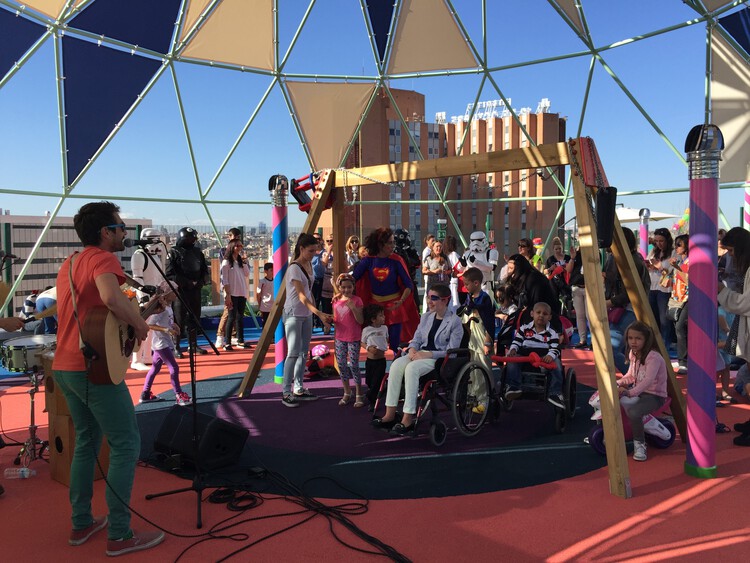 Garden and Playspace / Moneo Brock Studio, Spain. Image © Belén Moneo Feduchi
Garden and Playspace / Moneo Brock Studio, Spain. Image © Belén Moneo Feduchi
Later, in the 20th century, Isamu Noguchi and Aldo van Eyck designed playgrounds that fostered social interaction and creativity, shaping environments with structures that encouraged free exploration, movement, and physical engagement. These open settings allowed children to conquer public spaces, move freely, experiment, and take ownership of the environment, creating atmospheres that support diverse play styles and modes of participation.
Related Article Designing Inclusive Cities: The Role of Universal Design in Creating Accessible Urban Atmospheres 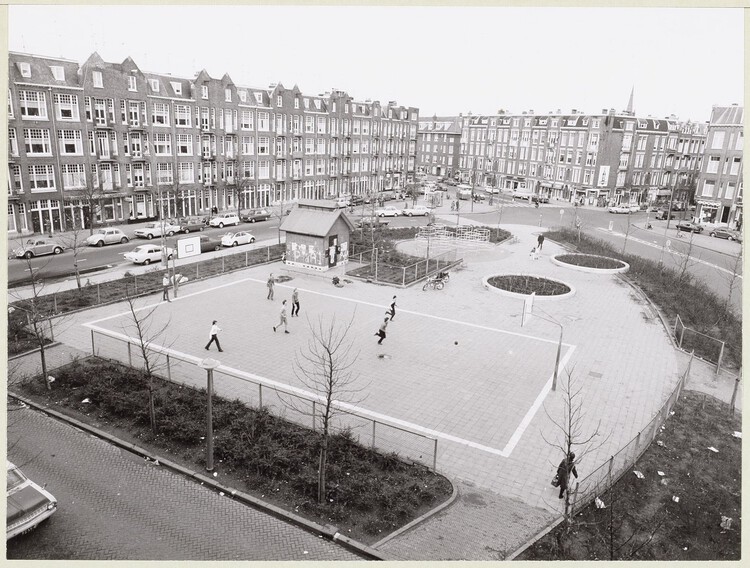 Krugerplein, with playground equipment designed by Aldo Van Eyck. Image © Public Domain, Wikimedia Commons
Krugerplein, with playground equipment designed by Aldo Van Eyck. Image © Public Domain, Wikimedia Commons
Building on this foundation, the shaping of spaces for children is evolving through contemporary approaches focused on universality, reflecting perspectives that embrace the diversity of bodies, movements, abilities, and experiences. This approach makes play accessible and enjoyable for all bodies, creating spaces where everyone can participate unhindered and without barriers.
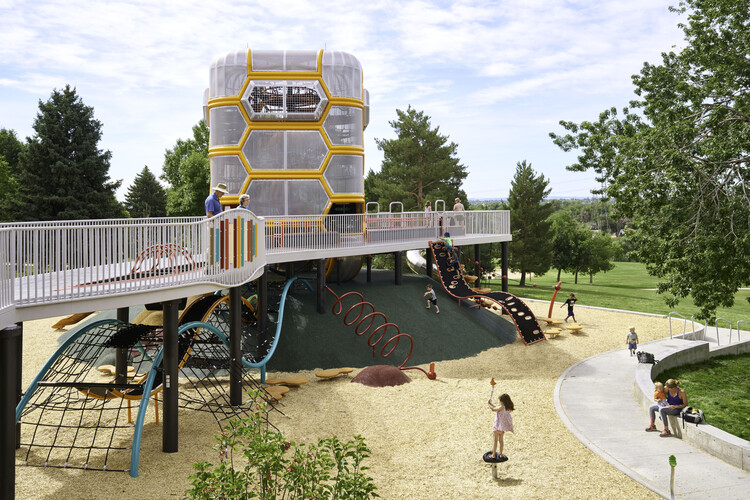 Parque Paco Sanchez / Dig Studio, U.S.. Image © David PattersonApplying Universal Design Principles in Playscapes
Parque Paco Sanchez / Dig Studio, U.S.. Image © David PattersonApplying Universal Design Principles in Playscapes
Accessibility is a fundamental aspect of play spaces, enabling all children to move, interact, and participate. Inclusive playgrounds go further, relying on universal design principles to create open and flexible environments that naturally embrace diverse bodies, movements, and physical and sensory diversity. The combination of materiality, atmospheres, and spatial dynamics fosters shared experiences, inviting everyone to play together without hierarchies or distinctions.
As an example, designing play elements or spaces with ground-level access allows both children who are standing and those who use mobility aids to enjoy equal conditions of use. Incorporating supports that accommodate different body positions on or within the equipment, as well as surfaces that provide stability during unexpected movements, transforms each element into a mediator of interaction, promoting exploration, movement, and play without physical barriers.
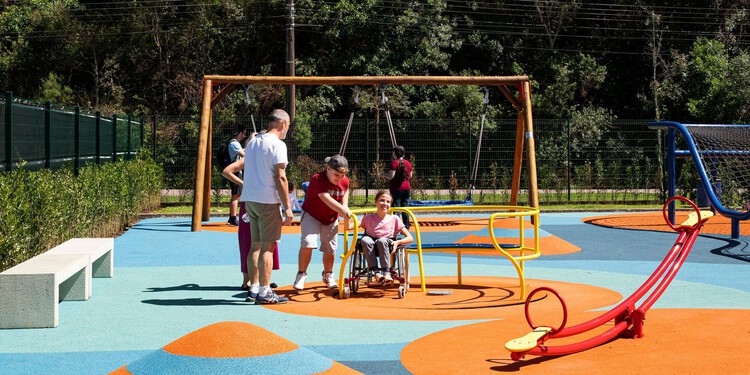 Barigui Playground / Antonio Abrão Arquitetura, Brazil. Image © João Vitor Sarturi
Barigui Playground / Antonio Abrão Arquitetura, Brazil. Image © João Vitor Sarturi
While the physical dimension of play remains fundamental, adding a variety of stimuli (physical, sensory, cognitive, and social) enriches the experience and creates layers of discovery. This reflects the principle of flexibility of use, which seeks to create environments that embrace neurodiversity and accommodate different abilities, interests, and modes of interaction, offering diverse paths and experiences within the same space.
Other strategies include analyzing the distances between play elements, creating rest areas, and providing equipment for both active and leisurely activities. These approaches follow the principle of low physical effort, allowing everyone to participate without limiting the experience. Such examples demonstrate one way in which universal design principles can guide the planning of playgrounds. By applying these strategies thoughtfully, spaces can accommodate diverse bodies, movements, and interaction styles, transforming playgrounds into a richer experience that is more responsive to those who inhabit them.
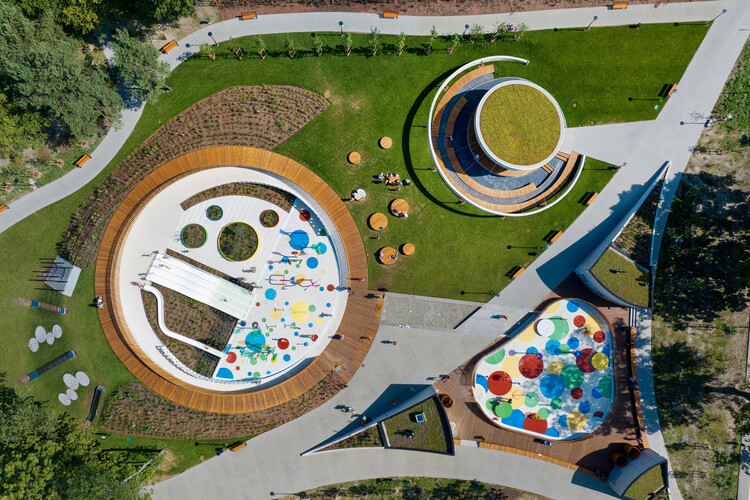 Recreation and Sports Park / RS+ Robert Skitek, Poland. Image © Tomasz ZakrzewskiThe Future of Inclusive Play and Its Cultural and Social Impacts
Recreation and Sports Park / RS+ Robert Skitek, Poland. Image © Tomasz ZakrzewskiThe Future of Inclusive Play and Its Cultural and Social Impacts
Perspectives on inclusion are emerging as a socio-cultural framework with relevance beyond the playground, emphasizing diversity and the interconnected nature of social and spatial experiences. As cities evolve, they aim not only to meet functional needs but also to anticipate a future in which inclusion is central to social life, positioning play spaces as catalysts for collective transformation.
Shifting from the macro to the micro scale, it is clear that cities face challenges that inclusive playgrounds alone cannot address. When carefully integrated into the urban and community fabric, these settings can become social hubs that connect neighborhoods, generations, and cultures, fostering spontaneous and collaborative encounters. To enhance these interactions, playspaces could incorporate sensory and technological stimuli, such as movement-responsive surfaces or interactive installations, enabling diverse bodies and abilities to explore and engage with the space.
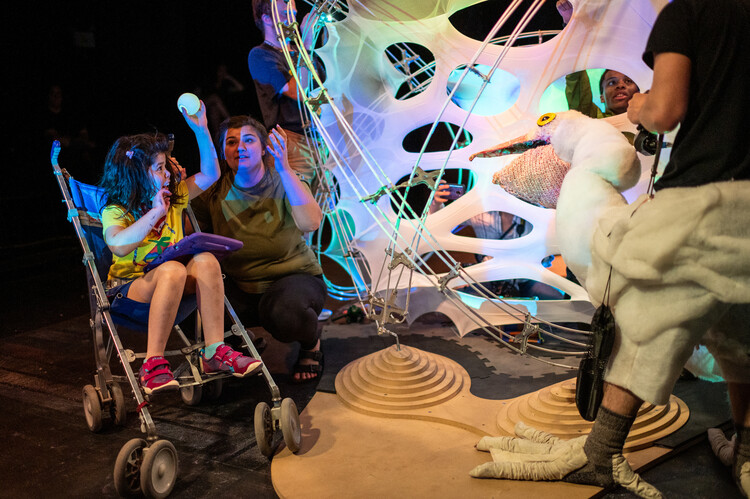 Social Sensory Architecture for Children with Autism. Image © Eric Bronson/Michigan Photography
Social Sensory Architecture for Children with Autism. Image © Eric Bronson/Michigan Photography
There are many possibilities for the future, as we recognize that the built environment evolves and we evolve with it. The future of inclusivity in architecture is reflected in how recreational approaches have progressed, from Froebel’s use of playful learning to more recent strategies such as Noguchi’s focus on exploration and Van Eyck’s integration of activities into the urban context, which laid the foundation for the evolution of modern playgrounds. Today, contemporary design practices shape playscapes not only as open settings but also as flexible, inclusive, and adaptive spaces that embrace the full diversity of bodies, movements, and experiences.
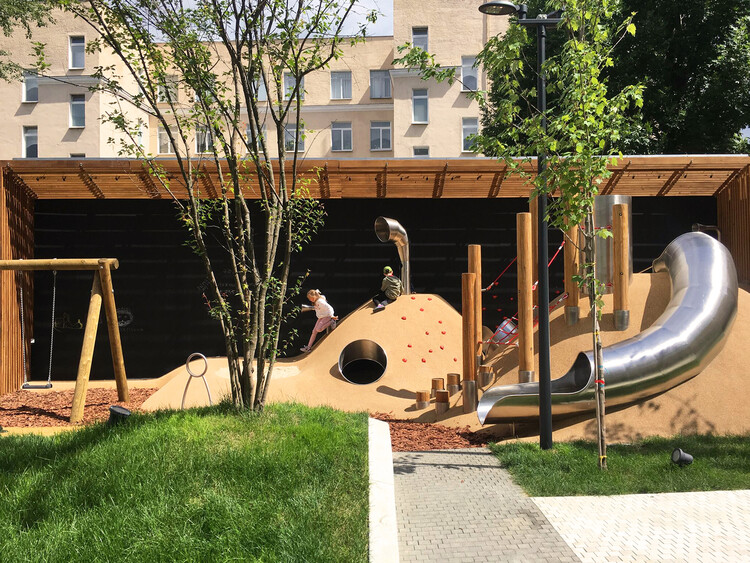 Dune Playground / Bureau Druzhba, Russia. Image Courtesy of Bureau Druzhba
Dune Playground / Bureau Druzhba, Russia. Image Courtesy of Bureau Druzhba
This article is part of the ArchDaily Topics: Shaping Spaces for Children, proudly presented by KOMPAN.
At KOMPAN, we believe that shaping spaces for children is a shared responsibility with lasting impact. By sponsoring this topic, we champion child-centered design rooted in research, play, and participation—creating inclusive, inspiring environments that support physical activity, well-being, and imagination, and help every child thrive in a changing world.
Every month we explore a topic in-depth through articles, interviews, news, and architecture projects. We invite you to learn more about our ArchDaily Topics. And, as always, at ArchDaily we welcome the contributions of our readers; if you want to submit an article or project, contact us.
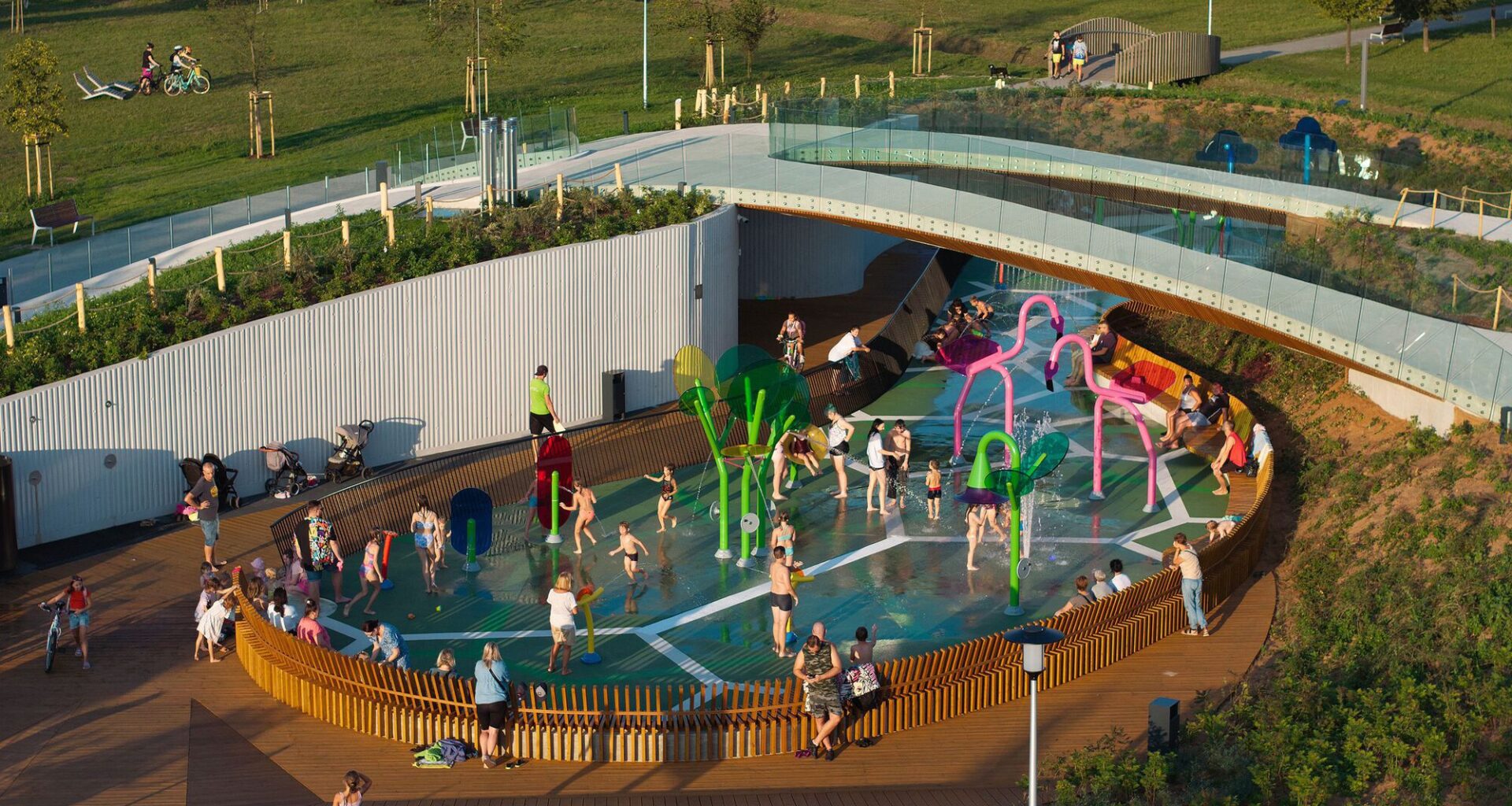
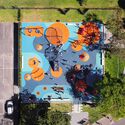
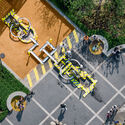
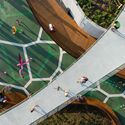
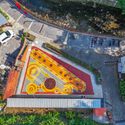
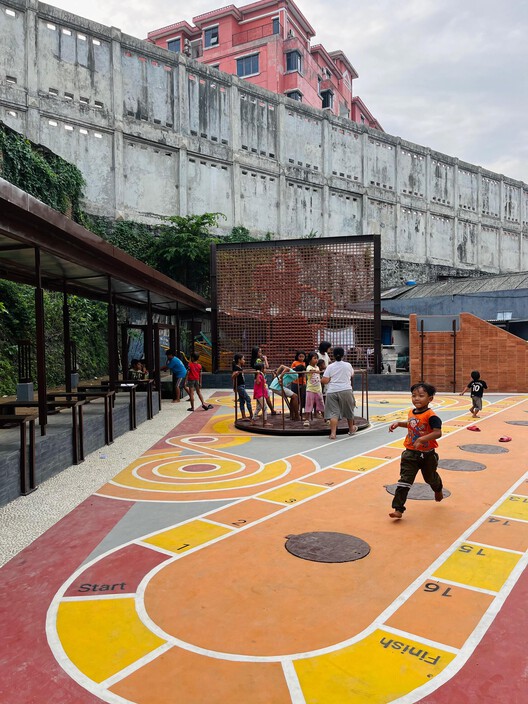 Kampung Mrican Phase 1 and Microlibrary Pringwulung / SHAU Indonesia. Image © Instansi Direktorat PKP
Kampung Mrican Phase 1 and Microlibrary Pringwulung / SHAU Indonesia. Image © Instansi Direktorat PKP